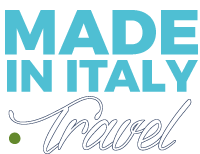The best way to travel through Italy is by its wide-ranging train rails. Fast trains (Intercity, Frecce, Eurostar) cost between 20-100 euros per trip. The slow regional trains cost between 3-25 euros per trip, take them! you could admire better the beautiful landscapes you would pass by. For short distances, you can take buses and subways with a cheap price, spending around 2 euro for a single ticket.
You really want to drive in Italy? We got it: it could be hard to visit the isolated villages and rural areas making Italy so groovy. We assure you that exploring areas in the middle of nowhere by train and bus is possible in some way, and easier than you think. Nevertheless a rented car guarantees you more freedom and, depending on the number of people you’re with, it could be the cheapest option. You could even rent a motorcycle or scooter, but probably they are not the best choice for long distance trips.
That said, driving in Italy can be a savage experience, mostly for the awesome reputation of Italian drivers. They get wilder the further south you reach! Driving in Italian cities is for daredevil drivers only. Ok, we joked a bit..if you read the following rules you’ll be handling Italian roads like a boss..just don't abuse the car horn, please.
1. COMPULSORY DOCUMENTS
Foreign-registered vehicles having fulfilled customs obligations (if applicable) are allowed to circulate in Italy for a maximum of one year.
When driving in Italy, you need to have the following documents with you:
- Vehicle registration certificate.
- Valid national driving licence enabling to drive the category of vehicle driven.
Unless your national driving licence was issued by an EU/EFTA-member state, it must be accompanied either by an international driving permit, to be obtained prior to departure, or by a sworn translation into Italian.
- Third party liability insurance cover bought in an EU country. Residents of non-EU countries should contact their insurance company prior to departure and check whether they need a green card (international insurance certificate) or a short term insurance.
All foreign-registered vehicles circulating in Italy must display a nationality sticker at the rear.
2. MAIN DRIVING RULES
In Italy you must drive on the right. The left lanes are reserved for overtaking. The vehicle to be overtaken must keep as far to the right as possible.
Driving on the emergency lane is forbidden, since this is reserved for rescue and emergency vehicles and emergency stops.
An adequate safety distance should be maintained so as to avoid collisions in case the preceding vehicle brakes suddenly.
Seat belts are compulsory for the driver and all occupants of the vehicle, including light quadricycles and micro cars.
Moped riders cannot carry any passenger until they are 16 years old.
Moped riders aged at least 16 can carry one passenger, provided this is indicated in the moped registration document.
Motorcycle or moped riders must wear a helmet. Helmets must be European type-approved and must be worn correctly at all times.
Driving on the lanes specially reserved for public transport is forbidden. Such lanes are identified by means of special road signs and yellow road markings.
3. PARKING
In town areas parking places are usually designated by road-surface markings in three different colours, as follows:
Blue lines indicate a “pay and display” parking place. An accompanying sign gives the relevant details including paying hours and parking charges. Charges vary from town to town.
The parking receipt must be displayed on the dashboard inside the car. Payment can be made either at local parking meters with coins, or by purchasing a “scratch and display” tag at tobacconists’ or newspaper shops.
White lines indicate a free-of-charge parking place. An adjacent sign may indicate a time
restriction requiring that a parking disc be set to time of arrival and displayed on the dashboard.
Yellow lines indicate a parking place reserved for special categories of users (such as disabled motorists, local residents, municipal services and utilities) holding a permit issued by the relevant Municipality.
Parking/garaging of LPG-fuelled vehicles (conforming to ECE/ONU 67/01) in closed buildings is allowed only at above-ground floors of covered car parks and first underground floor of underground garages.
4. RESTRICTED TRAFFIC AREAS (“Zone a Traffico Limitato” ZTL)
In Restricted Traffic Areas (ZTL) a no thoroughfare is in force for private vehicles outside of specific hours – usually early morning and late afternoon. Weekdays and hours when it is possible to access ZTLs vary from town to town, according to local ordinances.
Warning: make sure you avoid restricted traffic areas in the historical centres of Italian cities or remember to pay attention to information signs at the entrance to ZTLs.
Anytime a vehicle enters or exits a restricted traffic area (Zona Traffico Limitato - ZTL), cameras take a picture of the license plate.
The photo is automatically sent to a computer of the Municipal Police and if the license plate is not registered in the relevant database a violation ticket is generated and sent to the owner of the vehicle.
Restricted traffic areas are clearly indicated by a sign showing a white circle with red borders, stating the hours in which the area is restricted.
5. BLOOD ALCOHOL LEVEL LIMITS– DRUGS
The general legal limit of alcohol in the blood of drivers is 0.5 g/l (0.05%).
A special limit of 0.00% applies for newly licensed drivers having held their driving licence for less than 3 years, young drivers up to 21, as well as for professional drivers.
Of course, driving under the influence of narcotics and psychotropic substances is also forbidden.
